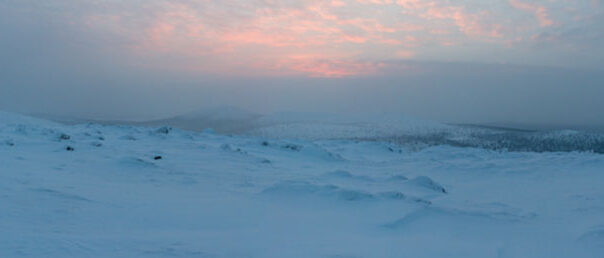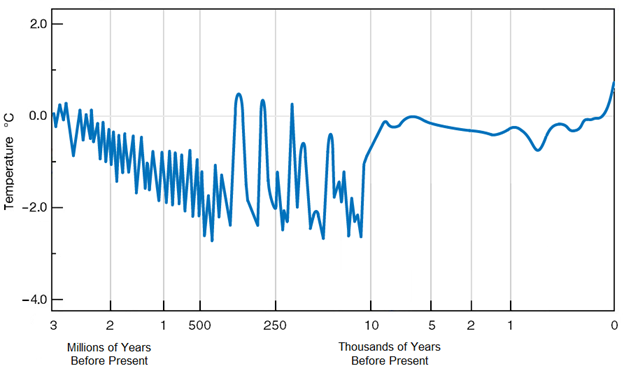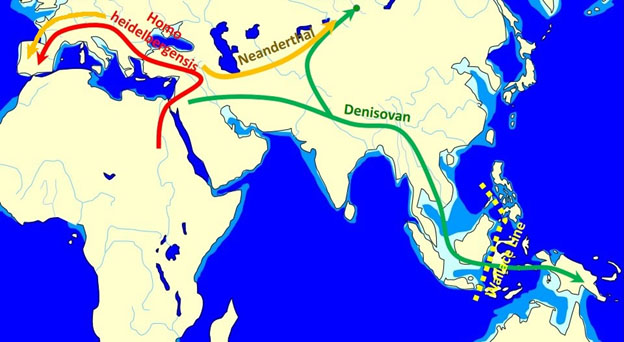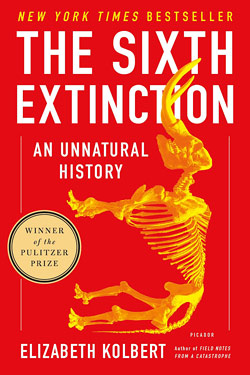
The Climate at the Birth of Homo Sapiens
During most of humanity’s existence, Earth’s climate has been harsh and hostile. In the few million years since the first of our genus appeared, lands in the north were largely buried beneath layers of ice as much as two miles (three kilometers) high, while elsewhere it was dry and barren.
Scientists call this time the “Pleistocene epoch.” It ended roughly 20,000 years ago when the planet began a period of unusual warmth that has lasted until this day, and our species has flourished. But this benign and stable climate is about to end.
A Big Change at the Birth of Humanity
An uplift of the tectonic plate under the Pacific Ocean raised the land now called the Isthmus of Panama, which blocked the circulation between the Atlantic and the Pacific.
Roughly 2 ½ million years ago a geological event was completed that still influences our climate today. An uplift of the tectonic plate under the Pacific Ocean raised the land now called the Isthmus of Panama. This blocked the circulation between the Atlantic and the Pacific and changed the course of the major ocean currents. The continents had already moved to where they are today, with most of the world’s land mass in the northern hemisphere. The emergence of Panama was the final piece of our modern climate puzzle.
This arrangement is in some ways pretty strange. Small changes in the amount of sunlight reaching the Earth can be magnified into large changes in the climate. Slow changes in the planet’s orbit (and not in the output of the sun, which is nearly constant) change not only how much energy reaches Earth, but also where and when it does. Land masses heat and cool more quickly than the oceans and can be covered more easily by ice, so the larger landmasses in northern latitudes experience a much greater effect from these orbital changes.
After the rise of the Isthmus of Panama, Earth’s climate saw a gradual cooling with a 41,000-year saw-tooth pattern of cold and thaw. This was caused by the northern hemisphere tilting back and forth towards and away from the sun. In Africa, where the first human species now emerged, colder northern weather caused a reduction in rainfall. Tree cover gave way to open grassland. Much evidence indicates that the first humans evolved to adapt to the dryer, cooler environment.
About two million years ago, our direct ancestor H. erectus appeared. In terms of longevity, H. erectus was the most successful human species ever, migrating from Africa to inhabit southern Asia through India and China all the way to Java. It seems clear that H. erectus left Africa over the Sinai Peninsula during warmer, wetter times, possibly following herds of game. And after they left, they likely found coastal routes easier to follow during glacial periods when sea levels dropped hundreds of feet.
From Bad to Worse
Eventually an even more severe 100,000-year climate cycle took over. This period is when the Earth’s orbit changed from nearly circular to more elliptical, which affected how much of the sun’s warming energy reaches the entire planet. There followed four main “glacial” periods roughly 80,000 years long and three shorter “interglacial” periods of roughly 10,000 years during this Middle Pleistocene period. (There was much variation within all these episodes, and some studies divide them into more periods.)
H. erectus needed to keep migrating and evolved independently in their many far-flung habitats.
Ice sheets covered the northern continents, shrinking during the shorter warm periods, only to return in the next freeze. H. erectus needed to keep migrating and evolved independently in their many far-flung habitats. Regional peoples developed very different characteristics and are now identified as distinct human species. Some became the Neanderthals of Europe, robust people well suited to the cold. Other groups evolved into the mysterious Denisovans of central Asia, probably the “Hobbits” of Indonesia, and other human species as well. DNA studies indicate there are some species still to be discovered.
Africa experienced a “megadrought” during the next-to-last major ice age that greatly expanded the Sahara. This drought ended around 125,000 years ago in the Eemian interglacial period, the last time that Earth was as warm as it is today. Running rivers, lakes and lush vegetation returned to the deserts. Some descendants of H. erectus returned to Africa, and it was these or the ones who never left who became H. sapiens—us. Modern humans began new waves of migration out of Africa and throughout Africa itself.
Wherever these people went, they encountered the archaic humans who were already there. Time and again the H. sapiens migrations died out, but back in Africa H. sapiens had continued to evolve. The language and technology of H. sapiens came to far surpass that of the other humans, so much so that many researchers label these newer people H. sapiens sapiens, the first fully modern humans. A group of them who left Africa during the warm Eemian years went on to populate the entire world.
A video depiction of how climate change has determined the patterns of Homo sapiens migration over the millennia of our time on Earth.
How We Got Through
There was one more major ice age in the Pleistocene. This time it was the older human species, the Neanderthals, the Denisovans, and all the others, who died out. These archaic humans had been in place for hundreds of thousands of years and were better adapted physically to survive, yet it was the newcomers alone who endured. It seems likely that the language skills of the new arrivals gave them a greater ability to cooperate, and this allowed them to out-compete the more robust species for the dwindling resources.

The climate is now about to enter a phase unlike any experienced in millions of years. While warm periods in the distant past were beneficial to our migrating hunter-gatherer ancestors, today’s world is a very different place, and the climate is warming and the oceans are acidifying faster than they ever have. As Chris Stringer, a well-known anthropologist, puts it, “Humanity will be faced with either cooperating in the face of (these) crises or competing. And what we see from Neanderthals and H. sapiens is that the groups that cooperated better were the ones that got through.”


The Sixth Extinction
An Unnatural History
Elizabeth Kolbert
With all of Earth’s five mass extinctions, the climate changed faster than any species could adapt. The current extinction has the same random and rapid properties, but it’s unique in that it’s caused entirely by the actions of a single species—humans.

Foragers, Farmers, and Fossil Fuels
Ian Morris
Human social development, says Morris, is constantly generated by environmental and social factors. The amount of energy that can be extracted from the environment through technology defines the social possibilities, and thus influences the attitudes and world view of each epoch.
In the series: Our Finite Planet
Further Reading »
External Stories and Videos

Watch: Cosmic Knowledge and the Future of the Human Race
Sandra Faber, Kraw Lecture Series, UC Santa Cruz
National Medal of Science winner Sandra Faber describes how the profound insights of cosmology take the issue of sustainability out of the personal and into a more objective consideration of where – and if – we are going.

Watch: David Wallace-Wells | The Uninhabitable Earth
Extinction Radio
Famine, economic collapse, a sun that cooks us: What climate change could wreak — sooner than you think.
